Diversity in the Curriculum: The Vital Role of SMSC Subjects

Written by Laura Gregory-White
Laura is an RE Regional Advisor for Jigsaw Education Group. She has over 15 years experience as an educator and curriculum lead across Primary and Secondary.
In today’s pluralistic society, where diversity is a fundamental part of who we are, conversations around diversity in schools and the curriculum are increasingly important. Subjects like Religious Education (RE) and Personal, Social, Health, and Economic Education (PSHE) are vital tools in our curriculum offering. Investing in these subjects, invests in our children and young people’s successful development of the skills and knowledge that help to navigate the complexities of our diverse world with empathy, understanding, and a commitment to social justice.
In Primary schools, where all the teaching staff will have an impact on curriculum development, it is crucial that we are giving them the necessary time and expertise to enable this. From the teachers developing and delivering the individual lessons, the subject leads with oversight for the entire curriculum journey, to the senior leaders who set the values that underpin curriculum design within a school. We all share the responsibility of designing curriculum that not only imparts knowledge but fosters a sense of belonging and inclusivity preparing our children to become global citizens. This journey begins with a deliberate and conscious approach to curriculum design. Every decision we make, from the voices we amplify to the resources we use, must reflect the diversity of human experience.
When facilitating discussions with RE subject leads on this topic, we speak about the implicit and explicit features of the curriculum. The implicit being those decisions we make as curriculum designers about what we include and represent. It means asking ourselves critical questions: What perspectives are included in our syllabi? Whose voices are being centred? Are we offering a diverse range of representation? These considerations extend beyond the mere content of our subjects; they seep into the language we use, the images we present, and the values we share. These decisions may not be explicitly obvious to the children in our lessons, but it frames a journey for them that better represents the world they are growing up in. Without this careful consideration, we can unintentionally establish an unconscious bias or reinforce stereotypes.
Alongside these implicit considerations is the explicit curriculum, where we dedicate time in lessons to directly address issues of diversity, equity, inclusion, justice, and belonging (DEIJB). It’s about more than just ticking boxes; it’s about fostering meaningful dialogue, challenging biases, and nurturing a culture of respect and understanding. SMSC subjects provide the structured opportunities for students to explore complex societal issues, interrogate their own beliefs and biases, and develop the critical thinking skills necessary to navigate an increasingly interconnected world. For staff to feel confident in leading these discussions, we need to support the ongoing development of their knowledge and understanding of these issues as well as the ways in which safe learning environments can be established, and discussion and debate can be managed. This will support them in feeling confident to plan in these explicit curriculum opportunities for our children.
This is not a small job or short conversation with a defined end point. This is ongoing work, and it should be contextual. It is important that schools support their staff to engage with this through investment in high-quality resources, providing the time and opportunity for evaluation and review, and dedicating time to ongoing learning and development for staff.
In a world dominated by technology, AI, and algorithms, education needs to do more than impart knowledge. It must nurture empathy, compassion, and a sense of collective responsibility. To achieve this, we must elevate and enhance subjects like RE and PSHE. They are essential components of a well-rounded education that prepares students to navigate the complexities of the modern world.
Harmony in Heritage: Sharlene-Monique Unveils 'A New Life' For World Book Day
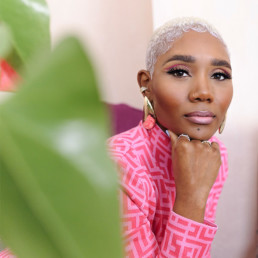
Written by Sharlene-Monique
Sharlene-Monique is a London based singer-songwriter, author and broadcaster. She is known as a versatile, passionate, authentic, collaborative creator and performer. Her three concept projects Destiny, Perspectiveand Raw & Honest Love combine evocative, soulful vocals with deeply inspiring songs of empowerment, love and self-acceptance with music to move and soothe the soul and spirit. As an independent artist and lead vocalist Sharlene-Monique has toured widely in Europe including as a support act for a 15 date UK tour with the pop legend Gabrielle.
Renowned Singer-Songwriter-Broadcaster Sharlene-Monique is set to release her second book, A New Life, a heart-warming picture story celebrating the hope, courage, and determination of the Windrush generation. Scheduled for release on Tuesday, March 5, 2024, for World Book Day. Sharlene-Monique navigates the loss of her grand-parents by sharing their inspiring journey in A New Life. The book recounts the true story of Winston and Mavis, who, in 1958, embarked on a courageous journey from Jamaica to London, laying the foundation for a new life for their family.
The experiences of their great-granddaughter, Tahlia, unfold as a poignant narrative, resonating with young readers aged 3-7. It is made all the more special by the viral TikTok video that captured the spirited dance of Sharlene-Monique’s 90-year-old grandparents, viewed over 500,000 times across multiple social media platforms.
A New Life stands as a valuable resource for children, offering insights into the Windrush generation’s experiences. It sparks conversations about family stories, resilience, and the passing down of talents and interests through generations. Serlina Boyd, founder of Cocoa magazine, praises the book as “a beautiful picture book that tells the story of the brave arrival of Tahlia’s Great-Grandparents embarking on their new life in Britain. A wonderful read for the whole family.”
Sharlene-Monique is known for; her heartfelt song ‘Thank You’, released in June 2023 to commemorate the 75th anniversary of the Windrush generation which continues to make waves and was featured on ITV, her recent hosting of the Melanated Stories documentary series on TBN UK and a supporting role in the 15-date tour with UK pop legend Gabrielle showcase her multifaceted talents. Sharlene also continues to sing with the Kingdom Choir since their unforgettable performance at the 2018 Royal Wedding in front of a global televised audience of 2 billion people. With a background in education and as an award-winning children’s choir conductor, Sharlene-Monique adds depth to her artistic endeavours.
Reflecting on the book, Sharlene-Monique shares, “When I shared the video of my grandparents dancing, I had no idea the response would be in the thousands, it brought so much joy to people. This book will ensure their legacy will live on for many years to come, and I am so proud of that.”
A New Life: Available for pre-order now via sharlenemonique.com
Available at amazon.co.uk Tuesday, March 5, 2024
For interviews and more info, please contact sharlenemoniq@gmail.com
Facebook | Twitter | Instagram | TikTok| Website
Observations on the implementation of Relationships, Sex, and Health Education (RSE) in an English Primary School

Written by Alex Baird
they/them
Before moving to the Higher Educator sector seven years ago, I worked in various schools for over twelve years, latterly as Director of Sport. At the University of Bedfordshire I am a Senior Lecturer in Sport and Physical Education, an EDI Lead, and the Vice Chair of the LGBTQ+ Alliance staff network. I have just finished an EdD at UCL and the research I write about here constituted my EdD thesis.
My research took place in a primary school in Greater London during the summer term of 2021, just as Relationships and Health Education (including the new LGBT content) had become mandatory. At this time, Covid-19 restrictions were lessening though some protocols were still in place and the effect of lockdowns on both pupils and staff was evident. The school has no religious affiliation but the majority of pupils are Muslim, with a high proportion of English as an additional language (EAL) learners and higher than (the national) average of pupils receiving free school meals (FSM). The research was designed to appreciate how teachers feel positioned and work alongside them to create and teach an inclusive and effective RSE curriculum. Participants included five (non-LGBT identifying) females from the school who held a range of positions, roles, and experience but had all previously taught RSE and were currently teaching in Key Stage 2. Participants were asked to reflect upon RSE and the school culture via semi-structured online interviews. RSE lessons and other subject lessons were observed. Teachers’ reflections of lessons were gathered after observation through an informal discussion.
In interviews teachers expressed a commitment to a rights-based approach in RSE and highlighted the value lessons offered to facilitate dialogue with pupils. Lesson observations revealed a cautious approach to the age at which certain topics (e.g. puberty and conception) were covered and when these topics were covered, dialogue did not deviate from the purchased curriculum PowerPoint slides. The culture and routines of RSE lessons closely resembled other subject lessons observed, that is pupils engaged and valuing the subject, generally sitting in their allocated class seats but the authority and attention remaining on the teacher at the front of the class. Teachers wanted to offer fixed, clear and definitive truths, reinforcing good behaviour and deeming some pupils’ questions as inappropriate. Teachers remained uncertain about what personal opinions they could express whilst still adhering to professional conduct. Lessons which were only 45 minutes in length, shorter than Mathematics and English lessons observed, left teachers often hurrying the pace to try to cover the content. Lesson observations highlighted that gender norms are still being powerfully reinforced including the use of gender stereotypes in scenarios and segregated sex education lessons which send these messages overtly and covertly to pupils.
In light of the current heated and polarising debates surrounding LGBT lives in the UK, I would like to stress my call to rethink how RSE is taught should not be taken to mean it should not be taught. A fuller range of pedagogical approaches that include a critical and postmodern orientation are required to recognise pupils’ agency, their pre-existing knowledge, their emotions, and to the likely presence of pupils in LGBT families and pupils who are or may come to identify as LGBT. Effective RSE remains dependent upon schools providing sufficient training for staff, listening to pupils, and communicating effectively with all parents/carers to address misconceptions or issues. Actualising and normalising LGBT themes needs to go beyond merely a bullying discourse to seek to critique broader school culture and practices.
A portrait of the teaching of the British Empire, migration and belonging in English secondary schools
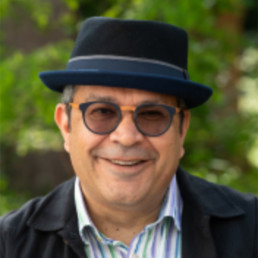
Written by Dr Jason Todd
Jason is a Departmental Lecturer at the Department of Education at the University of Oxford and currently leads the PGCE History programme. Before joining the University of Oxford, he taught history for 19 years in various London state schools, including time as an Assistant Headteacher in a Special Needs school.
I am working on a research project aiming to provide an empirical portrait of current teaching and learning around the interconnected themes of empire, migration and belonging in England’s secondary schools. This project’s aim is a simple one: to support teachers with the teaching of the British Empire, migration and belonging.
Histories of empire and migration are fundamental to understanding modern Britain including how we make sense of issues of belonging and identity. Recent events, from Brexit in 2016, to the Windrush Scandal in 2018 and the Black Lives Matter activism of 2020, have drawn attention to the interplay between the past and the present in dramatic ways, highlighting not only the salience of these histories but also their contested nature.
Despite its importance, there is a shared acknowledgement at the heart not only of recent campaigns from organisations such as the Runnymede Trust and Black Curriculum Project but also emphasised within the Commission on Race and Ethnic Disparities report, that there is currently no credible, comprehensive evidence base from which to reliably judge the extent to which today’s secondary students are being taught about the history and legacies of the British empire at all, let alone what they are being taught, in what manner and why. There is however evidence that teachers themselves have identified the need for targeted professional development support and training in this area.
It is precisely in response to this demand that I, as lead author of a letter to the Times in 2020, reiterated the TIDE-Runnymede recommendation that the government invests in better supporting teachers to confidently tackle these complex and potentially contentious themes. Both the Times letter and TIDE-Runnymede campaign made explicit reference to work from the UCL Centre for Holocaust Education’s internationally renowned and distinctively research-led approach to transformative teacher professional development. The Portrait of the teaching of the British Empire, migration and belonging research project was thus conceived as a crucially important intervention towards ultimately supporting teachers by first providing a much needed, robust and comprehensive, empirical evidence base. Our survey is one tool we are using to examine issues associated with teaching the British Empire, migration and belonging in schools and we encourage teachers of all subjects to complete it. https://redcap.idhs.ucl.ac.uk/surveys/?s=L33D9YEX7KRET3EX
We think that this project represents a tremendous opportunity to understand and shape the way young people engage with the enduring legacies, and ongoing debates, regarding the British Empire. Given the complexity of the topics, and the contested nature of many current debates, our desire is to offer nuance and illumination.
You can find out more about this project on our website https://portraitemb.co.uk/
These potent legacies shape the lives of millions, deeply affecting our sense of identity and belonging. It is critical that we forge paths towards better collective understanding of these subjects, however controversial. Confident and informed teachers are, of course, central to this.
Jason Todd is Co-Lead Investigator on a collaborative research project “A portrait of the teaching of the British Empire, migration and belonging in English secondary schools.” which brings together scholars from IOE, UCL’s Faculty of Education and Society and the University of Oxford’s Department of Education.
Beyond the Wall of Diversity

Written by Jonathan Lansley-Gordon
Jon studied theoretical physics at Imperial College London, before embarking on a teaching career in secondary and further education. Co-founder of The Blackett Lab Family – a national network of UK based Black physicists – he is passionate about widening access to STEM for traditionally excluded and underrepresented young people. He is a writer and series editor for Oxford University Press, authoring the Teacher Workbook for AQA GCSE Physics. A former Assistant Headteacher and school governor, he now runs Physics Forward – an organisation that provides support for schools, trusts and higher education institutions on all things science, curriculum, and DEI strategy.
Scenario: the head of physics wants to celebrate diversity in the curriculum. They create a ‘wall of diversity’ for the department, showcasing various historic and current black and brown physicists.
I sometimes give keynotes that get the audience to discuss this scenario. More often than not, there’ll be a few nervous stares back at me – almost expecting to be told that this is something terrible and ignorant.
I quickly reassure my fellow science educators that this particular case study, IMO, is by no means an example of something ‘bad’. Actually, I think – as a starting point – raising the profile and visibility of racially diverse physicists is positive for a host of reasons; black and brown people are typically absent from science curricula (as is the case across many other subjects), which can reinforce the implicit notion that science – and especially physics – is reserved exclusively for people who are [insert dominating characteristics here].
The following questions provoke some deeper thought around this scenario:
- Is the intention behind this ‘wall of diversity’ clear to the students?
- Does the wall showcase the achievements and contributions of the featured scientists, alongside (and contextualised by) their ethnicity?
- Is this project the only reference to diversity, or the only mechanism by which conversations about diversity is introduced in the classroom?
- Who contributed to the design and people featured?
- How / when will the project be revisited and refreshed?
- In what ways is diversity related to gender / age / sexual orientation / neurodivergence / disability acknowledged and celebrated elsewhere?
- Does this sit within a wider departmental strategy to incorporate diversity and inclusion?
I won’t pretend that the secondary physics curriculum lends itself to easy and natural opportunities to explore themes related to identity and representation. There is a lot of content to get through: energy, forces, waves, gases and electricity don’t immediately conjure inspiration of thought related to human identity. So, in some ways, it’s understandable that we might turn to “curriculum accessories” – people posters – at the risk of students sussing out our tokenistic nods to inclusion.
This is not to say there is no way to go about doing it authentically. Subject content is one of multiple lenses we can use when thinking about diversifying a physics curriculum – and indeed, the wider curriculum. How the content is delivered (teaching, learning and assessment techniques), and student voice (surveying their attitudes, values and beliefs with respect to physics) are a couple of other lenses that can help frame approaches to weaving inclusive themes through the curriculum.
At Physics Forward, we give physics and science educators the thinking tools to develop strategic approaches and practical resources to creating a diverse and inclusive curriculum through these and other lenses. Get in touch to have a chat about how we can support you and your team do the same!
"How do we decide when to teach the names of private parts in Primary School?"

Written by Ian Timbrell
Ian is an education consultant and trainer, supporting schools develop their provision for LGBT+ pupils and their RSE curriculum. He has worked in education for 15 years; including as a class teacher and a deputy head teacher.
Debating whether to teach the names of genitals in Foundation Phase/Stage education (ages 3-7) is a nuanced discussion that encompasses considerations of child development, cultural norms, parental preferences, and educational goals. Making this discussion more complex is that in most countries (England and Wales included), when to introduce the names of genitals in Relationships and Sexuality Education (RSE) is not specified to a single age, but within a range (generally 3-11). In both England and Wales, schools are expected to teach the names of body parts, but which body parts, in which order and at what age, are not referenced. This is needed to provide schools flexibility to teach children at a stage appropriate to them, but has also resulted in a wide range of interpretations with some schools introducing the terms as young as 3, with other schools only teaching them when introducing lessons on puberty in upper KS2. I get regular questions about a particular RSE providers who provide lesson plans on the names of genitals in year 1. The rationale given by the organisation is not based in research, but in their own experience and through conversations with practitioners and so although a scheme has this lesson in, there are considerations that need to be made when deciding when to follow this guidance.
One of the reasons that it is difficult to make firm decisions about when to introduce terminology is the difficulty of finding peer-reviewed research in this area. For the most part, schools are led by either out of date research or guidance from organisations that is based on opinion and experience, rather than corroborated research. Introducing vocabulary in RSE and in areas of diversity is part of many studies and research projects and it is expected that in years to come, we’ll have more clarity in this area.
So with these difficulties in mind, what should schools do and how can we make decisions that is best for our pupils?
Arguments for Teaching Genital Names in the Foundation Phase/Stage:
- Promoting Body Positivity and Autonomy: Teaching children accurate anatomical terms for genitals fosters a healthy understanding and acceptance of their bodies. By using correct terminology, some believe that children develop a sense of body positivity and autonomy, enabling them to communicate effectively about their bodies and recognise inappropriate touch.
- Facilitating Safety and Awareness: Knowledge of proper anatomical names empowers children to articulate discomfort or instances of abuse more accurately. It is suggested that learning the correct names for genitals, like any other body part, have names helps break down taboos surrounding discussions of sexuality and promotes a culture of safety and awareness.
- Preventing Misinformation: Using euphemisms or avoiding discussions about genital names may lead to confusion and misinformation. Children are naturally curious and may seek answers from unreliable sources if not provided with accurate information in a safe and supportive environment.
- Normalizing Discussions about Sexuality: Introducing genital names in early education may usualise discussions about sexuality and reproductive health. When presented in an age-appropriate manner, such conversations may lay the foundation for future learning and promote healthy attitudes towards sexuality and relationships.
Arguments against Teaching Genital Names in the Foundation Phase/Stage:
- Cultural Sensitivities and Parental Preferences: Some parents may feel uncomfortable with the idea of their young children learning genital names in an educational setting. Cultural norms, religious beliefs, and personal values vary widely, influencing parental preferences regarding what and how topics related to sexuality are addressed in early education. Introducing the genital names without the support of parents and guardians could cause conflicts with and between home and school.
- Developmental Appropriateness: Critics argue that introducing genital names at too young an age may be developmentally inappropriate and potentially confusing for children. They suggest that focusing on broader concepts such as body boundaries, personal safety, and self-respect may be more suitable for early childhood education. There is also the risk that it may not be appropriate for pupils with certain ALN/SEND at a certain time, or that the resources don’t take into account their individual needs.
- Respecting Family Dynamics: Education systems must respect the diversity of family structures and dynamics. Some parents prefer to address topics related to sexuality and anatomy within the family unit, tailoring discussions to their child’s individual readiness and comfort level.
- Risk of Misinterpretation: Critics caution that discussing genital names in early education may inadvertently sensationalise or overemphasize the significance of genitals, potentially leading to misunderstandings or discomfort among children and parents.
Finding a Middle Ground:
In navigating this issue, finding a middle ground that respects diverse perspectives while prioritizing children’s well-being is essential. Educators and policymakers can consider the following approaches:
- Consult with parents and experts: Engage parents, carers, and experts in child development, psychology, and education to gather insights and perspectives on the issue. Work with the community to develop an approach that works for your school, not because a scheme dictates it.
- Plan for individuals: Do not take a blanket approach to teaching. Consider whether every pupil is ready and what reasonable adjustments need to be put into place for certain pupils.
- Provide opt-out options: When permitted by the curriculum, offer parents the opportunity to opt their children out of specific lessons or discussions related to genital names, respecting their autonomy and preferences.
- Emphasise sensitivity and inclusivity: Approach discussions about genital names with sensitivity, inclusivity, and cultural awareness, acknowledging diverse perspectives and beliefs within the community.
The debate over whether to teach genital names in early childhood education reflects the broader discourse surrounding sexuality education, child development, and cultural sensitivities. The review of RSE in England may provide additional transparency around this issue, but until then, we have to use our professional judgement and work with all stakeholders to ensure that our children get quality RSE and are safeguarded against harm.
Empowering PSHE Leadership: Leading with DEI Principles
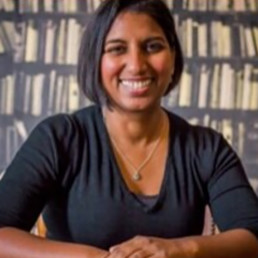
Written by Malarvilie Krishnasamy
Malarvilie is a seasoned leadership consultant, coach, and trainer with over 20 years of experience in education. As a former history teacher and senior leader, she passionately advocates for coaching as a catalyst for transforming school cultures. Malarvilie offers accredited courses, endorsed by The Institute of Leadership, which develop emotional intelligence and assertive leadership skills. Her reflective and supportive programmes enhance staff morale and well-being, promoting humanity in leadership. A vocal proponent of equity, diversity, and inclusion, she actively engages as an ally through speaking engagements, workshops, and amplifying the work of others. Malarvilie is also deeply committed to promoting Personal, Social, Health, and Economic (PSHE) education, recognising its pivotal role in nurturing well-rounded individuals.
I’m excited to tackle a topic that’s not just important but essential in education: leading PSHE with a DEI (Diversity, Equity, and Inclusion) lens. As educators, we know that PSHE isn’t just about teaching facts; it’s about nurturing well-rounded individuals who are equipped to navigate the complexities of life. That’s why it’s crucial to infuse DEI principles into our PSHE curriculum, acknowledging and respecting the diverse cultural backgrounds and experiences of our students. Join me as we explore how embracing DEI principles can transform PSHE education and create a more inclusive learning environment for all.
In many cultures, discussions about puberty, relationships, and sexual education may not happen at home. This leaves young people to rely solely on their friends or inaccurate information from the internet. This highlights the importance of PSHE education as a reliable source of accurate information. By providing comprehensive and inclusive PSHE/RSE in schools, we can ensure that all young people have access to the correct information, regardless of their background or cultural context.
Moreover, fostering an inclusive environment in PSHE lessons creates a safe space where students feel comfortable discussing their experiences and asking questions. This helps break down barriers and ensures that every student feels valued and supported in their journey through puberty and relationships, not just in terms of biological changes but also emotional and social aspects.
But leading PSHE isn’t just about delivering lessons; it’s about cultivating a whole-school approach to well-being and inclusivity. This involves considering staff values and providing them with comprehensive training sessions to navigate sensitive topics effectively, ensuring alignment with the values of the school, the curriculum, and the 2010 Equality Act. Staff members, while bringing their own values, must understand and adhere to the principles outlined in the Act, which mandates the promotion of equality and diversity within educational settings.
Additionally, understanding local and national statistics regarding teenage health issues, such as drug use, alcohol misuse, underage sex, lack of condom use for teenagers, and teenage pregnancies, equips educators with evidence to emphasise the importance of PSHE education. By sharing this information and ensuring staff awareness of their duty as PSHE teachers within the British curriculum, we can empower them to confidently and effectively deliver PSHE education, thereby supporting the well-being of our students.
But PSHE leaders often get left out in the cold. Schools know PSHE is important, but they don’t always give leaders training to lead effectively.
The challenges faced by PSHE leaders extend beyond traditional teaching roles. Effective communication with staff, parents, and students is paramount, but the support in developing these skills often falls through the cracks. PSHE is a whole school subject. Unlike other subjects, it’s rare to have dedicated PSHE teachers, and leaders must coordinate a diverse group of educators, each with their primary subject expertise. This aspect is often underappreciated, with a mere 1 management point failing to reflect the intricacies of PSHE leadership.
Additionally, the unique pedagogy required for PSHE is often overlooked in training programs, preventing the ability to deliver PSHE effectively. It’s time to invest in the professional development of our PSHE leaders.
That’s where the Level 5 Inclusive and Progressive Leadership of PSHE Course comes in—a comprehensive solution to bridge these gaps. This course equips PSHE leaders with the skills, knowledge, and awareness needed to excel in their roles. From diplomacy and communication to the unique pedagogy of PSHE, this program addresses every facet of effective PSHE leadership.
Conclusion
Leading PSHE with a DEI lens is not just a responsibility; it’s a commitment to creating a safe, inclusive, and empowering learning environment for all students. By incorporating diversity, equity, and inclusion into our approach to PSHE, we ensure that every young person receives the support and education they need to navigate the challenges of puberty, relationships, and well-being.
Equipping staff with the necessary training and awareness of their duties under the 2010 Equality Act empowers them to deliver PSHE education effectively, promoting the health and well-being of our students. Let’s continue to champion a holistic approach to PSHE leadership, where every student feels valued, respected, and supported in their journey toward adulthood.
Click HERE to download your free PSHE DEI self-assessment!
Click HERE to download your free KS2 or KS3 Diverse Perspectives self-assessment!
Also for further resources have a look at the The Diverse Educators’ Inclusive RSHE Toolkit – Inclusive RSHE Toolkit | Diverse Educators We are collating a growing bank of resources to help you to review and develop how inclusive the RSHE provision is in your school.
A Curriculum That Empowers Young People in Care

Written by Anu Roy
Anu is a TeachFirst leadership Alumni and digital trustee and teacher committee lead for charities in England and Scotland. She is currently a digital curriculum development manager and works in inclusive education projects incorporating tech.
This year is the first time I have developed and designed curriculum models for young people in the care system. Although students I have taught in previous roles come from a range of backgrounds, this role is the first time I have looked at curriculum specifically through the lens of an education that often forgets the difficulties faced by care experienced young people.
Out of nearly 12 million children living in England, just over 400,000 are in the social care system at any one time. They face a lot of disruption in their learning journey due to personal circumstances, financial difficulties and challenging home circumstances. This means in comparison to their peers, care experienced young people fall behind in most education and health outcome indicators.
Working with a team of educators, social workers, web developers and UX/UI designers, these are the ways we believe curriculum development can help experienced young people thrive:
- Introduce context alongside technical concepts: technical concepts across all subjects can be difficult for CEYP to master in a short space of time so contextual information wedged on either side of a technical explanation will enable their understanding and grasp to learn and embed the technicality in their wider learning framework.
- Champion peer learning– CEYP could have challenging interactions with direct instruction if it reminds them of unpleasant previous instructor situations therefore activities that use peer learning not only lowers the stakes for them to develop their self confidence and interactivity in a lesson but encourages building friendships within the classroom while learning key concepts together.
- Open ended ethos– instructors and teachers should veer away from specifying the outcome of a learning topic as ‘to achieve grade _’- instead the learning objectives should first be anchored to exploring the curiosity around the topic with prompts such as ‘what would happen if____?’ or ‘what could we learn if we explored how___’. Academic pressure to perform instantly can feel overwhelming for CEYP. While they should not be met with lowered expectations, instead the reframing helps to welcome them to first explore before learning the topic and moving on to an evaluative stage where they gain more agency.
- Knowledge connection outside the classroom-Learning feels more relevant for CEYP when they are introduced to topics through the lens of real world use. Introducing a curriculum through a skills development framework linked to increased employment motivates them to understand the use of each topic, further strengthened by real world examples, work based scenarios and soft skill demonstrations. It helps them bridge the transition from education to active skill application and any learning based curriculum should also have opportunities through project work for practical applications related to public speaking, project management, team building and problem solving for CEYP to gain experience in these areas.
Many educators are unaware of the students in their classrooms who come from a care experienced background. While this should not be the only aspect of their identity to focus on, a student centered approach to relationship building alongside these curriculum findings should enable educators to build strong relationships by understanding the story and journey many of their students have taken to make it to the classroom and learn each day. Aimed with this knowledge and bespoke approach, schools and their wider communities can foster a sense of belonging for care experienced young people, something they have been denied of for too long.
Black History Month: Dismantling inequalities in education for better outcomes
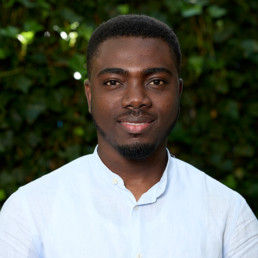
Written by Henry Derben
Henry Derben is the Media, PR, and Policy Manager at Action Tutoring - an education charity that supports disadvantaged young people in primary and secondary to achieve academically and to enable them to progress in education, employment, or training by partnering high-quality volunteer tutors with pupils to increase their subject knowledge, confidence and study skills.
Before the pandemic disrupted education, students from Black ethnic backgrounds had the lowest pass rate among all major ethnic groups at the GCSE level. However, the 2022-23 GCSEs marked a notable shift from the pre-pandemic period, with Black students on average achieving similar English and maths pass rates comparable to students of other ethnic groups.
Black History Month is celebrated in October each year in the UK to recognise the historic achievements and contributions of the Black community. It is also a prime moment to reflect on the state of education and how it can be reshaped to create a more equitable and inclusive future.
As part of activities to mark Black History Month at Action Tutoring, we had an insightful conversation on how to ensure better outcomes and a more enabling environment for Black pupils in schools with Hannah Wilson, a co-founder of Diverse Educators, a coach, development consultant and trainer of Diversity, Equity, and Inclusion practice. Hannah’s former roles in education include head of secondary teacher training, executive headteacher, and vice-chair of a trust board.
Below are some highlights of the conversation.
Re-examining Black history in the UK curriculum
Black History Month in the UK often focuses on the celebrated figures and events in mostly Black American history, such as the civil rights movement and famous Black personalities. However, Hannah highlights an important criticism – the lack of focus on UK Black identities.
“We want to move to the point where Black culture and identity are integrated throughout the curriculum,” Hannah explains, advocating for a more inclusive and comprehensive approach. The celebration of Black identity is that it’s often a lot of Black men being spoken about and not Black women, queer people, and disabled people. Thinking about that intersectionality and looking at the complexity and the hybridity of those different parts of identity often gets overlooked as well.”
A new Pupil Experience and Wellbeing survey by Edurio shows that pupils of Any Other Ethnic Group (48%) are 21% more likely to rarely or never feel that the curriculum reflects people like them than White British/Irish Students (27%). Additionally, Mixed/Multiple ethnic groups (16%) and Black/African/Caribbean/Black British students (18%) are the least likely to feel that the curriculum reflects them very or quite often.
Unpacking performance gaps
Data has shown that while a high percentage of Black students pursue higher education, they often struggle to obtain high grades, enter prestigious universities, secure highly skilled jobs, and experience career satisfaction. The journey to understanding the root causes of these educational disparities is a complex one.
Hannah recommended the need to rethink career education and the lack of diversity, equity, and inclusion strategies that often work in isolation.
“I don’t think all schools are carefully curating the visible role models they present. The adage about if you can’t see it can’t be it, and the awareness around the navigation into those different career pathways. I think that is saying that schools could do better. There’s a bridge there to be built around the pathways we are presenting as opportunities on the horizon for young people as well. Representation within the workforce is another key aspect. We need to address the lack of Black representation in leadership positions, not only in schools but also in higher education.”
The early years and disadvantage
Disadvantage often begins at an early age. Children from low-income backgrounds, including Black children, start school at a disadvantage. Hannah pointed out that the key to dismantling this cycle lies in reimagining the curriculum, the approach to teaching, and in valuing cultural consciousness.
“It’s important to start with the curriculum. The curriculum in the early years should be diverse and inclusive. The thought leaders within that provision or within that key stage are often quite white. That’s often the disconnect at a systemic level when it comes to policymaking around provision for the early years. Who is designing the policy for the early years? Who’s designing the curriculum for the early years? Are we being intentional about representation in the early years?”
“However, we need to move beyond simply adding diversity as a “bolt-on.” Their representation should be integral to the curriculum, not an afterthought. As young as our children join the education system, what can we do differently from the get-go to think about identity representation.”
Breaking the concrete ceiling
While tutoring is a viable method to help bridge the gap for underperforming students, Hannah stressed the need to change the system fundamentally. Rather than continually implementing interventions when problems arise, it’s best to revisit the structure of the school day, the diversity of teaching staff, and the core content of the curriculum.
“It has to start with the curriculum, surely tutoring and mentoring all of those interventions like mediation support mechanisms are so powerful, we know that make up the difference. But what are we actually doing to challenge the root cause? We have to stop softball. We’re often throwing money at the problem, but not actually fixing the problems or doing things differently. We need a big disruption and conscious commitment to change, but it needs to be collective.”
“We need to address the concrete ceiling that often prevents Black pupils from accessing leadership opportunities. Career guidance, sponsorship, and mentoring should be part of the solution to break these patterns. Collective action is essential to create lasting change.”
The power of engaged parents
Change should also start at home. Parents and guardians play a crucial role in a child’s education, particularly in the early years. Hannah suggests a shift in the dynamic between schools and parents.
“Thinking about how we work with parents and create a true partnership and collaboration. That to me, is what some schools perhaps need to revisit – their kind of plans, commitment, or the ways they work with different stakeholders. Engaging parents more closely is definitely a way of helping them get involved in schools so they’re part of that change cycle.”
The call to action for allies
In conclusion, Hannah’s powerful call to action focuses on allyship, encouraging non-Black people to actively support and contribute to the ongoing struggle for equity and inclusion in education.
I think for people who identify as being white, the reflection and awareness of your own experience with schooling, where your identity is constantly being affirmed and validated because you saw yourselves in the classroom, in the teachers, in the leaders, in the governors, and in the curriculum, that’s often taken for granted. It’s time for us to step back, see those gaps, and to appreciate how that affirms us, but how that could actually really erode someone’s sense of self when they don’t see themselves in all of those different spaces.”
There should be a conscious intention that educators make about what they teach, who they teach, and how they teach it, to really think about representation and the positive impact it has on young people. And being very mindful that we don’t then just perpetuate certain stereotypes and not doing pockets of representation and pockets of validation.”
Hannah’s insights underscore the urgency of addressing the disparities in our education system. As Black History Month wraps up, let’s heed the call to action and take collective steps toward a more inclusive and empowering education system that taps and nurtures the potential of all young Black students.
Why students should be taught the truth about Remembrance
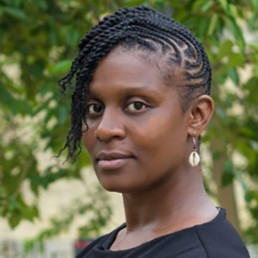
Written by Selena Carty
Cultural and Ancestral Genealogist, Global War Heritage Specialist, Identity and Empowerment Consultant and Founder of BlackPoppyRose.
I was recently asked by the British Army to contribute to its new set of school resources on Remembrance. As the founder of BlackPoppyRose, I accepted the opportunity. My aims are to enlighten all people of the contributions of African, Black, West Indian, Caribbean Pacific Islands and Indigenous communities to history in wars/revolutions and rebellions.
So, let me ask you a question: How do you mark Remembrance Day? For me, I remember Albert Carty who served in World War I in the No’2 Construction Battalion. After arriving in the UK, he travelled across England and Scotland as part of the lumberjack battalion. He returned home after the war and became a father to seven sons. Five went on to join the Royal Canadian Airforce and served in World War II. The remembrance of families doing their part in a world that had set so many apart.
Remembrance means a connection to yesterday and the yesterdays before yesterday, which brings light the relevance of our actions today. When I think about Remembrance, I think of my mother, father, grandparents and great grandparents. I think about the legacies of family. I wouldn’t be here today if it were not for the efforts made by those who made choices before I came into existence.
There is a crucial need to improve how we explain the significance of Remembrance to young people, especially in the UK. We live in a cosmopolitan modern world where everything is moving a lot faster than I remember. Everything is now! (Like Amazon Prime deliveries, with no understanding of the framework, planning and years of innovation to make this happen.)
The legacies that have built the worlds we see today are very often under-educated, misinterpreted or omitted. The more we do to encourage Remembrance will allow us to come together with our own unique stories and share the impacts that the changing worlds and legacies before us have had and will still have on us in the present and near future.
To know that you are connected to something that has passed is significant to why we are here, why we speak the languages we do, why our names are what they are, why we can call more than one place our home or ancestral homes, and even the accessibility to the music that we listen to. All this enables each of us to have a unique perspective about Remembrance that we all benefit from.
Where should children start to learn about their past? With their immediate families as well as their peers and friends’ parent are also potential sources of information teachers. Additionally, organisations like BlackPoppyRose can help point them in the right direction. We also encourage students to check their local libraries, bookshops, museums, galleries and archives as well as the internet by using key phrases or tags.
So, what more can schools do to teach pupils about Remembrance? Tell the truth about what you know. We all have a version of ‘truth’. Telling the truth resonates stronger than untruths as it allows us to identify with the world we currently live in and the legacies we have inherited from the past. It will help to understand the choices made by so many in uncertain times. We cannot change the past, but we can be open and honest about what has happened, allowing us all to work together to find improvements on things that are pre-existing and still affecting us all today.
The British Army has created a library of resources for secondary schools. To access its Remembrance resource, visit https://tinyurl.com/ye2928v7

